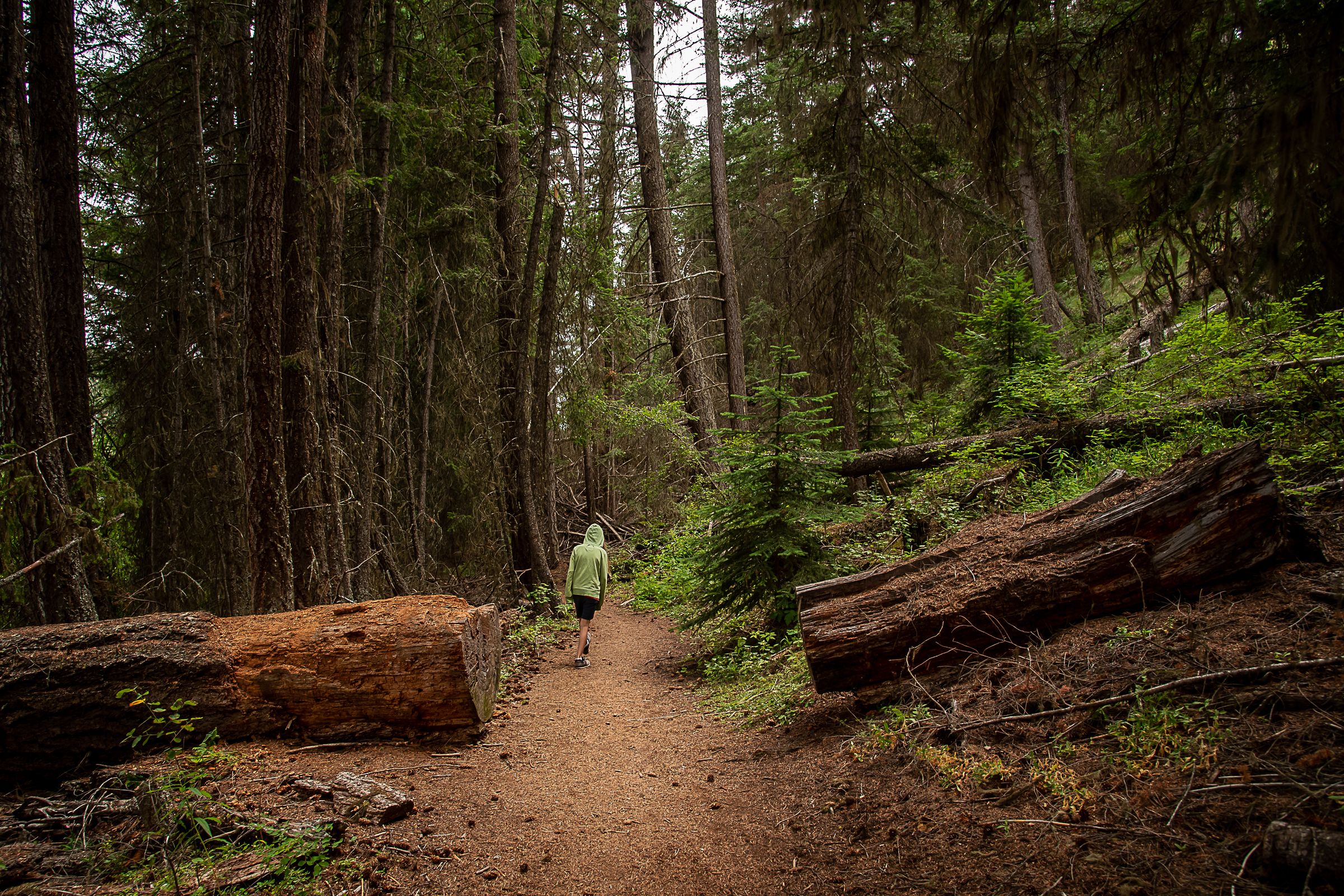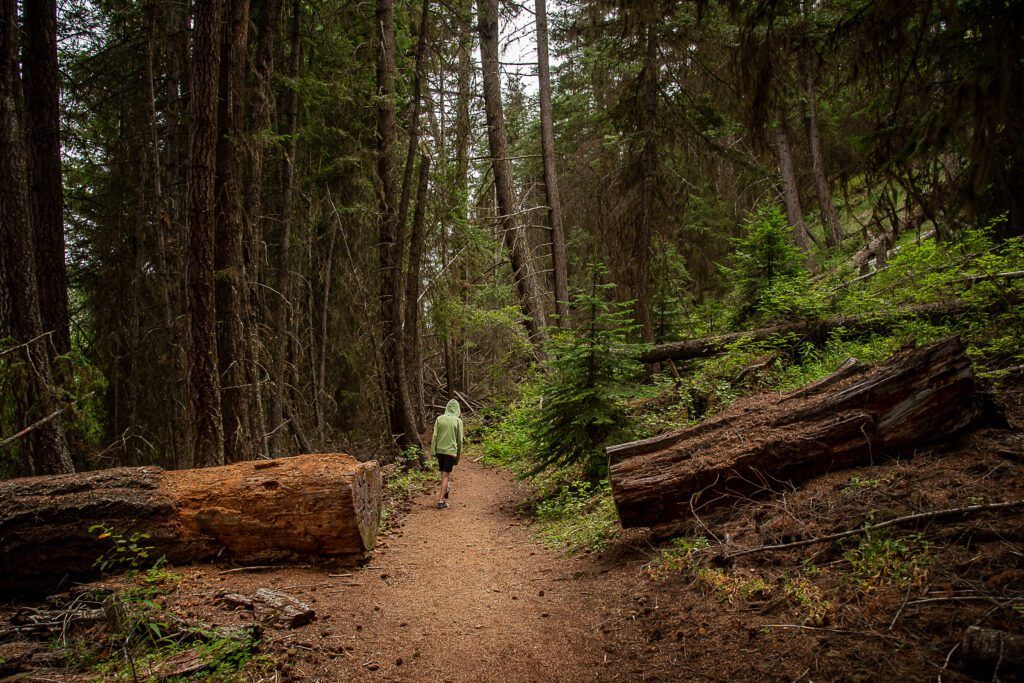Sometimes we get so caught up in thinking about what we can do to make our photography better that we lose sight of how photography can make us better. I’ve written more than a few guides on how people can improve their photography, but as my photography has developed, I have come to appreciate how photography improves me; how it makes me a calmer, more observant, and healthier person.
Whatever your road to becoming a photographer, whether you are a professional or just shooting for a hobby, I believe that photography has some important benefits that can enrich your life. Specifically, shooting in nature can improve your physical and mental health.
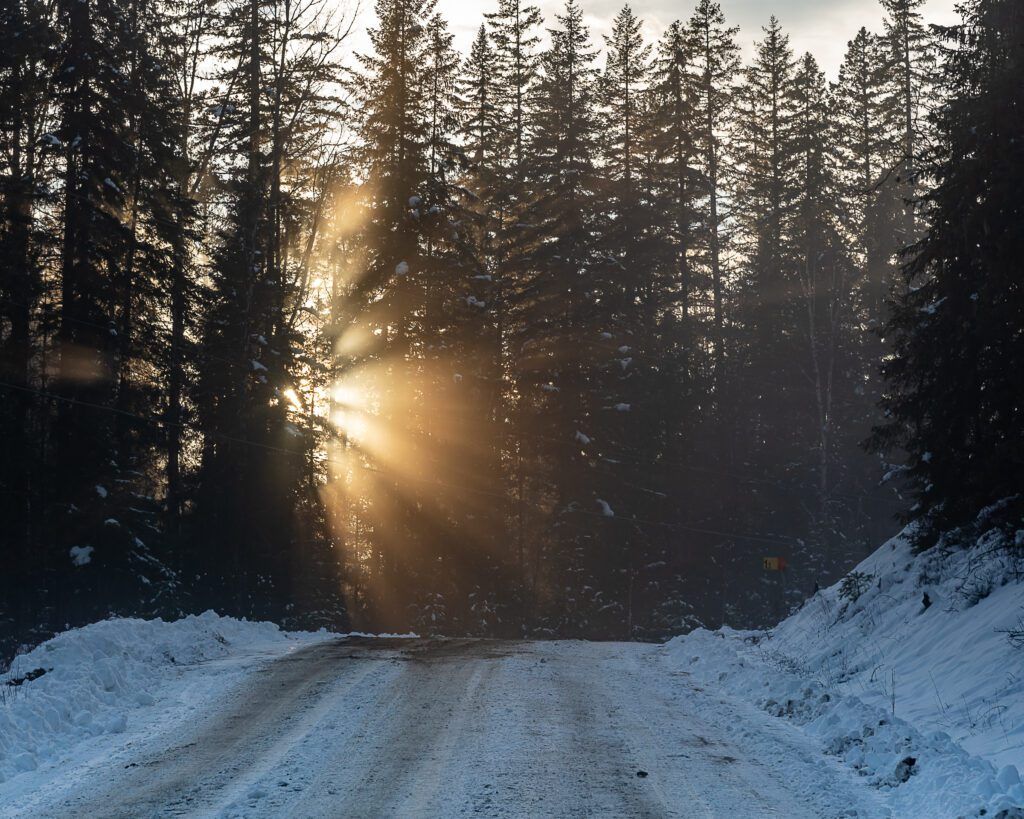
This image was taken while I was evacuated from my city due to floods. The situation caused a lot of stress and anxiety, but an outing in nature helped me refocus and feel calm. I call this image Salvation’s Light. Being outdoors was just the salvation I needed to feel good again. Photograph by Leanne Cleaveley
I have experienced the benefits of photographing in nature personally, over the last couple of years. Through the pandemic and having to evacuate my city twice, once due to wildfire and once due to flooding, I have leaned on my photography to see me through some troubling times. It provided relaxation, gave me a familiar routine when almost everything around me had changed, and took my mind off my troubles.
In this guide, I want to explore some of the ways nature photography can help improve your physical and mental health, as well as some practical tips for how to find nature no matter where you live, and some things to consider when exploring those places.
Recommended Reading: Want a step-by-step guide on photography skills with your DSLR? Grab a copy of our best-selling guide, the DSLR Crash Course.
Photographing Nature Can Soothe the Soul
Why nature? Numerous studies explore the benefits of being in nature. Many say that we need to get out more, that nature can help ease anxiety and depression and that folks who spend time in nature are happier. As a photographer, I would add that there is a multitude of subjects to explore while reaping all these other benefits.
Some days I question whether my need to get out to shoot is actually just a need to get out and the camera is my “excuse.” The answer doesn’t really matter to me because I know how I feel afterward. Being outside shooting really does soothe the soul.
People spend a lot of time using technology, and photographers are no exception. By heading out into nature we often disconnect from devices (except for the one you are shooting with) and the things that can cause us stress. Reconnecting with nature is much easier when you take away distractions like our phones or laptops.
Some days I question whether my need to get out to shoot is actually just a need to get out and the camera is my “excuse.”
The process of shooting, if you have been doing it for a little while, can itself be a familiar routine that helps you relax. I would recommend that you become familiar enough with your camera settings and gear, though, so that you can truly enjoy your time outdoors observing and capturing images.
Photographing in nature requires the skills of observation and concentration. You need to notice things around you to be able to photograph them well. Of course, like all skills, you can help develop them through practice. Try to make it a daily or weekly routine, to get out in nature. The more you observe, the better you will get at finding great subjects to photograph, and the better you will feel.
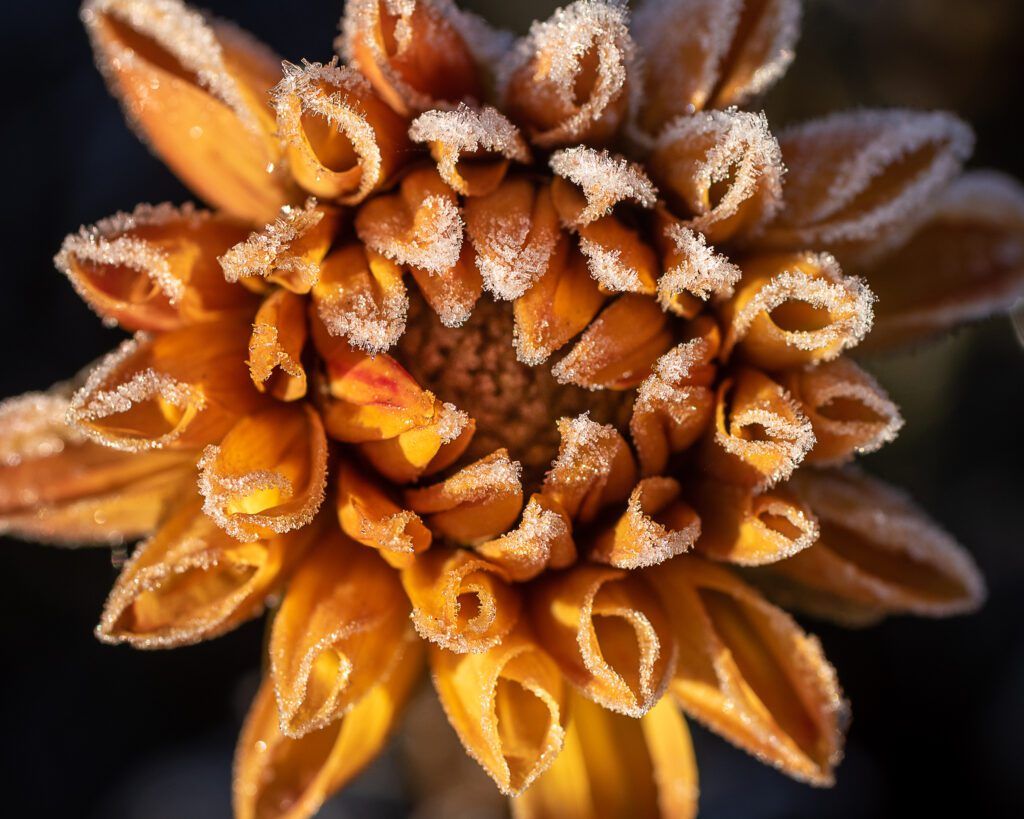
Grounding exercises, intended to help people ease their anxiety, suggest focusing on details around you: the sounds, the textures, the things you see and smell. Noticing the details of the things around you in nature, like the frost on the flower in this image, is something that a good photographer does. And the bonus is, it is great for your mental health too! Photograph by Leanne Cleaveley
The process of observing and shooting in nature can become somewhat meditative if you do it enough. Becoming absorbed in the process can help you take your mind off of work or whatever else might be causing you stress.
Where to?
As a nature lover, I seek it out no matter where I am. From the city to the country, there are many places to explore that can provide that nature fix that you need.
If you have followed any of my photography or read my guides, then you probably already know that I am a huge fan of macro photography. There is something quite wonderful about losing yourself in small worlds that many folks don’t even know to exist.
Backyard photography lends itself well to macro photography as there is a multitude of things that you can shoot. Your backyard will depend on where you live. For me, it literally is my backyard and garden. I love shooting the miniature world through all the seasons.
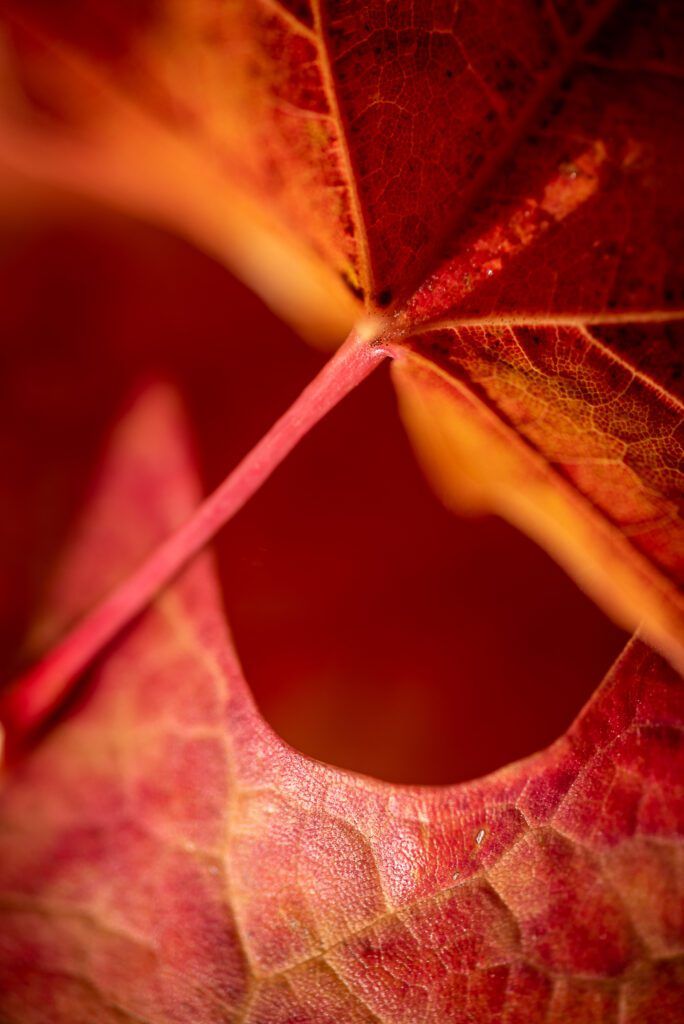
You don’t have to go far to find something to shoot in nature. This, a macro photo of some autumn leaves shows a subject easily found in a city or the woods. Photograph by Leanne Cleaveley
For some folks who live in a city, their backyard might be a rooftop garden or nearby park. When craving nature while visiting a big city, I will seek out the green spaces. I remember feeling like I hit the jackpot once when I came across some potted flowers in downtown Vancouver, B.C. that were simply buzzing with bees. The flowers and bees made great photo subjects and the time spent shooting helped me recharge my batteries.
Other photographers may feel the need to venture further out into the wilderness and get away from it all. A hike or nature walk can be just the thing for them to get their nature fixed. This type of outing has the added benefit of exercise which can be great for both your physical and mental well-being.
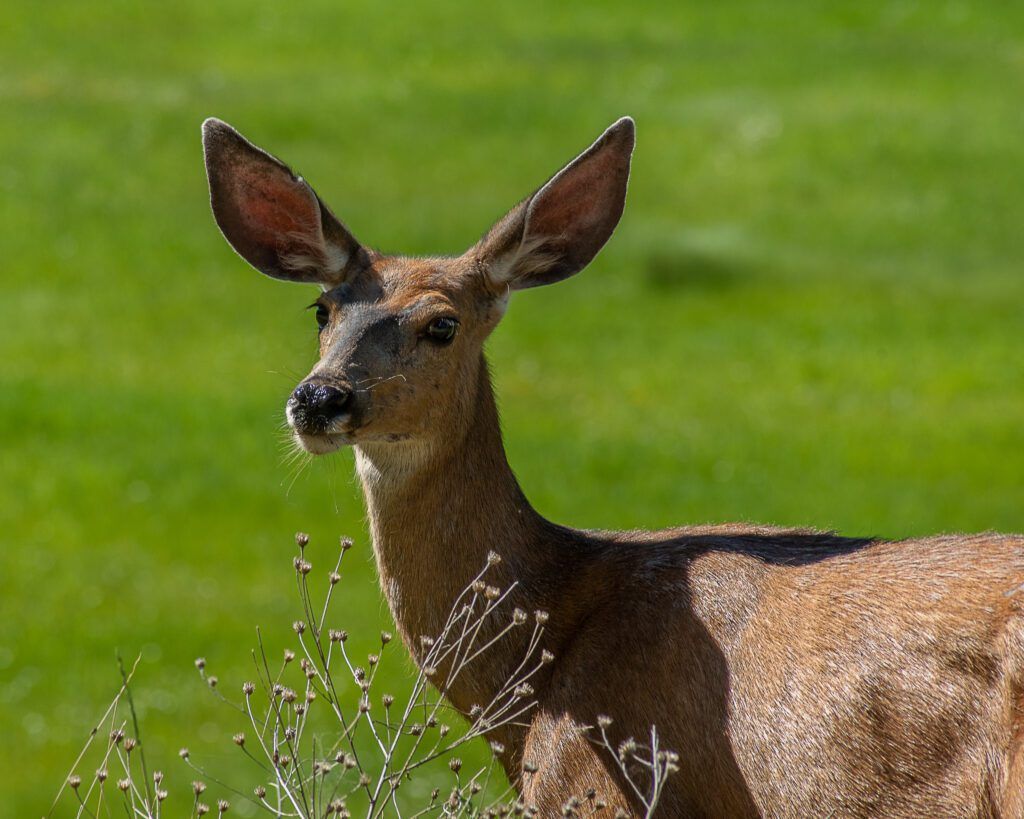
A hike through the woods can offer a wonderful variety of subjects including wildlife, like the deer in this image. Photograph by Leanne Cleaveley
A piece of advice for those heading out into the wilderness: let folks know where you are going, and be prepared. Even better, find a photographer friend or a friend who is patient enough to wait for you while you capture images and head out together.
Some cities have photography clubs or naturalist organizations that take planned nature outings together at different times throughout the year. Joining a club can often be the extra commitment you need to get yourself out in nature even more.
A piece of advice for those heading out into the wilderness: let folks know where you are going, and be prepared.
If you must go by yourself, know the terrain and dress appropriately for the conditions. Take your phone and anything else you might need should your outing take longer than planned. It is always a good idea to throw these items into your camera bag just in case: heat packs (during cold weather), a snack, and water. Where I live, there are often bears around, so I take a bear bell and air horn for safety, just in case.
Key Lesson: Consider any dangers before heading out into the wilderness, dress appropriately, be prepared (with snacks and water), and always let someone know where you are going.
Recommended Reading: Want a step-by-step guide on photography skills with your DSLR? Grab a copy of our best-selling guide, the DSLR Crash Course.
To Plan or Not to Plan
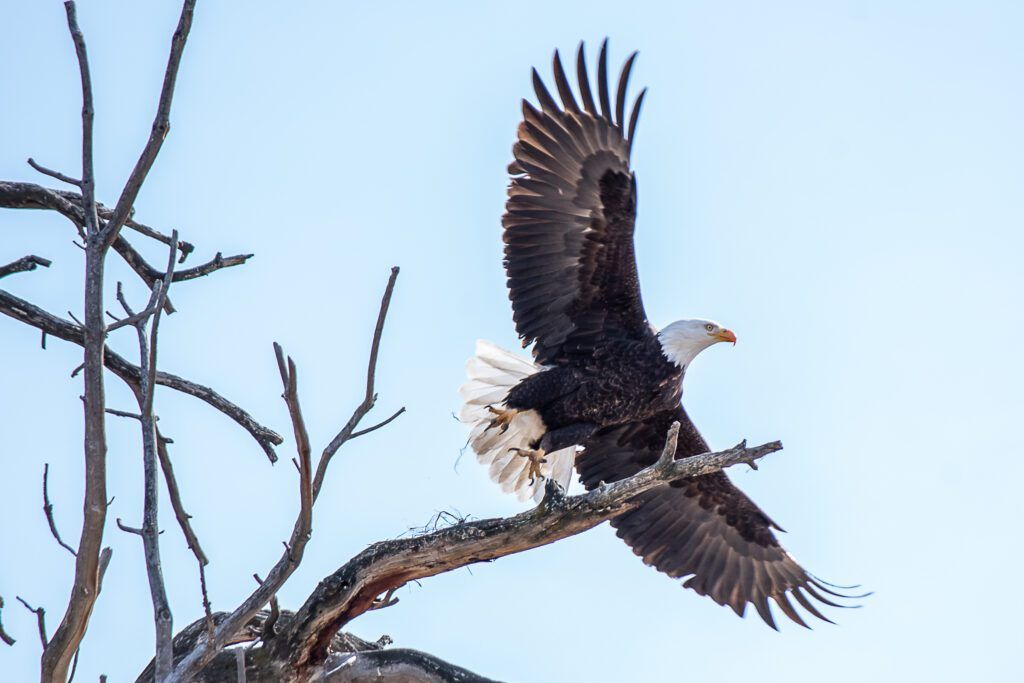
What to take with you depends a lot on where you are going and what you might see. I quickly swapped out my wide-angle lens (I was shooting landscape images) for my 55-200mm lens when I spotted this eagle in a nearby tree. Photograph by Leanne Cleaveley
When I head out into nature, sometimes I have a plan for what I am wanting to shoot, but often I just go with the flow and see what grabs me. Even when I do go expecting to shoot a particular subject, my plans are often foiled by interesting distractions. So, keep an open mind and be sure to bring a variety of lenses in case you need to switch out your wide-angle lens for a telephoto to catch that great shot of an eagle.
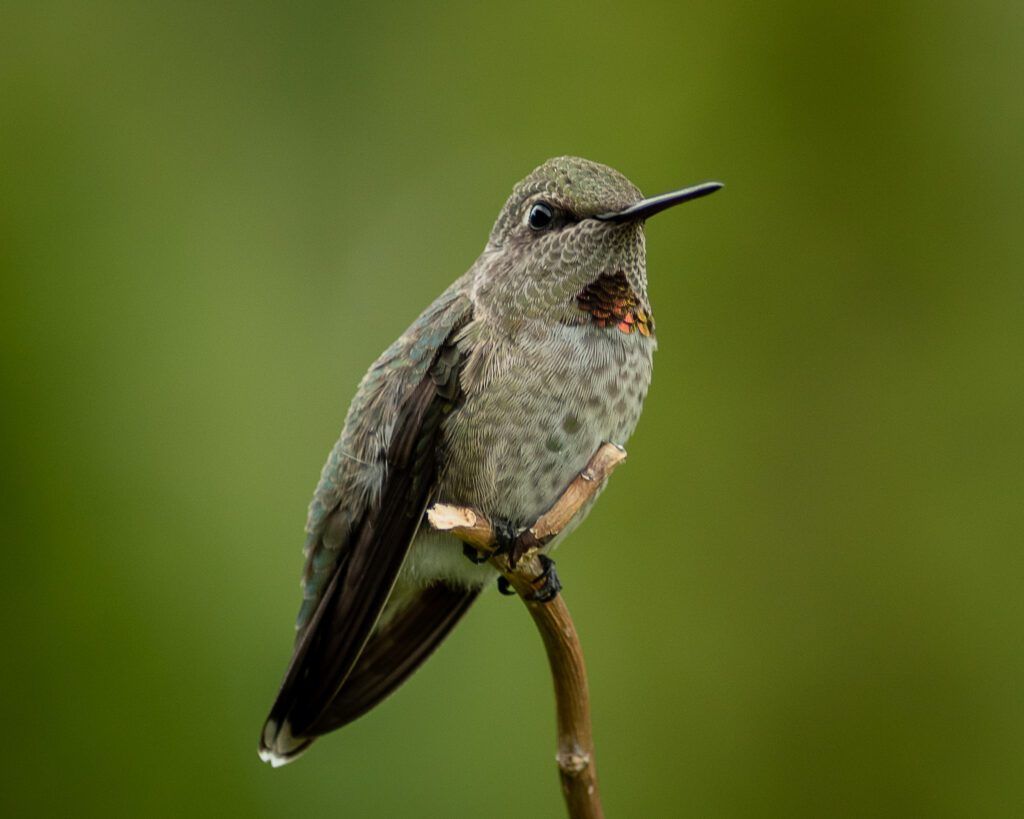
Being prepared means having the right equipment to capture a shot like this hummingbird. This image was taken with a 70-300mm lens at 270mm. Photograph by Leanne Cleaveley
Some of the tools that I take with me vary depending on what part of nature I am exploring and how I feel that day. Often, if I am just popping out into the backyard, I will take my camera with the one lens affixed. I like the “lightness” of not having a lot of equipment and I can always pop back inside if I really need something.
Going on a hike or long walk in nature usually necessitates bringing a camera bag and a few more items. I typically have three lenses: my wide-angle, a telephoto, and my macro. But what lenses you bring really depends on what you like to photograph. I also pack my flash and a diffuser for macro shots and my tripod for stability.
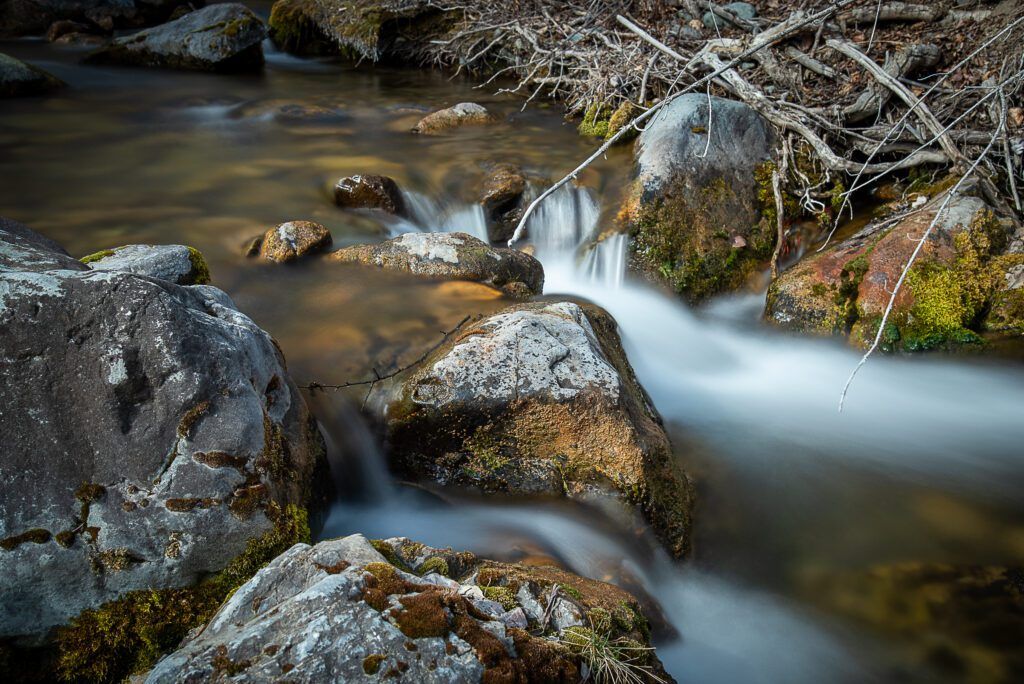
A tripod is a necessary piece of equipment for capturing long exposure shots like this image. Photograph by Leanne Cleaveley
Something I always take for longer outings is a spare battery. There is nothing worse than spotting that perfect subject and then not having any power left to capture an image. If you don’t already have a spare, I highly recommend you buy one and keep it charged and ready for when the one in your camera runs out.
If I am going to be near a creek or other water, I will often pack my ND filters for a long exposure shot. Of course, it is a good idea to have your tripod with you as well. I can’t tell you the number of times I kicked myself while trying to find a way to prop up my camera to get that silky smooth water shot because I left my tripod in the car or at home.
A smaller tripod or even a monopod can be a little lighter if you are hiking and find that your lenses and other equipment are already giving you enough of a workout. But a monopod still requires some extra support if you are doing long exposures.
Key Lesson: Some items you may want to consider bringing when going on a nature walk include a tripod/monopod, ND filters, a flash with a diffuser, and a variety of lenses. What you bring will depend on where you are going and what you plan on shooting. No matter what, plan to have a spare battery!
Any Season
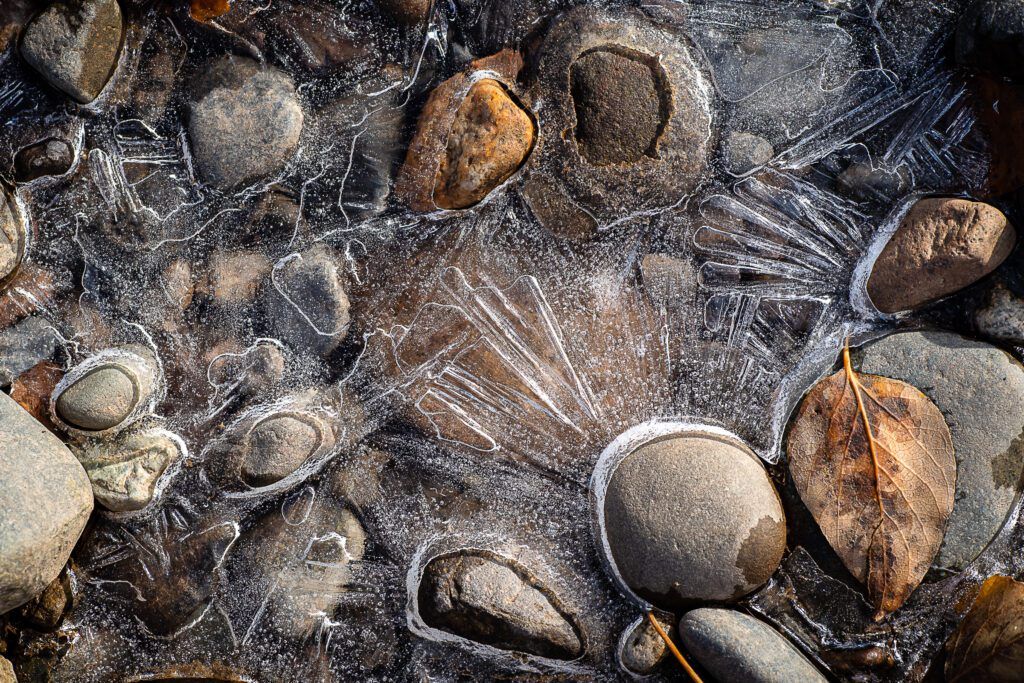
It was cold and windy the day I shot this image. I forced myself outside during a lunch hour and was very glad later when I reviewed my images and came across this one of frozen river water and rocks. The bonus: I also got out for some exercise and fresh air! Photograph by Leanne Cleaveley
We are all “fair-weather” photographers at times. Who doesn’t love heading out on a sunny day to enjoy the outdoors and capture some great images? But if you avoid heading out when conditions are less than spectacular, you miss out on those health benefits and some excellent shooting opportunities.
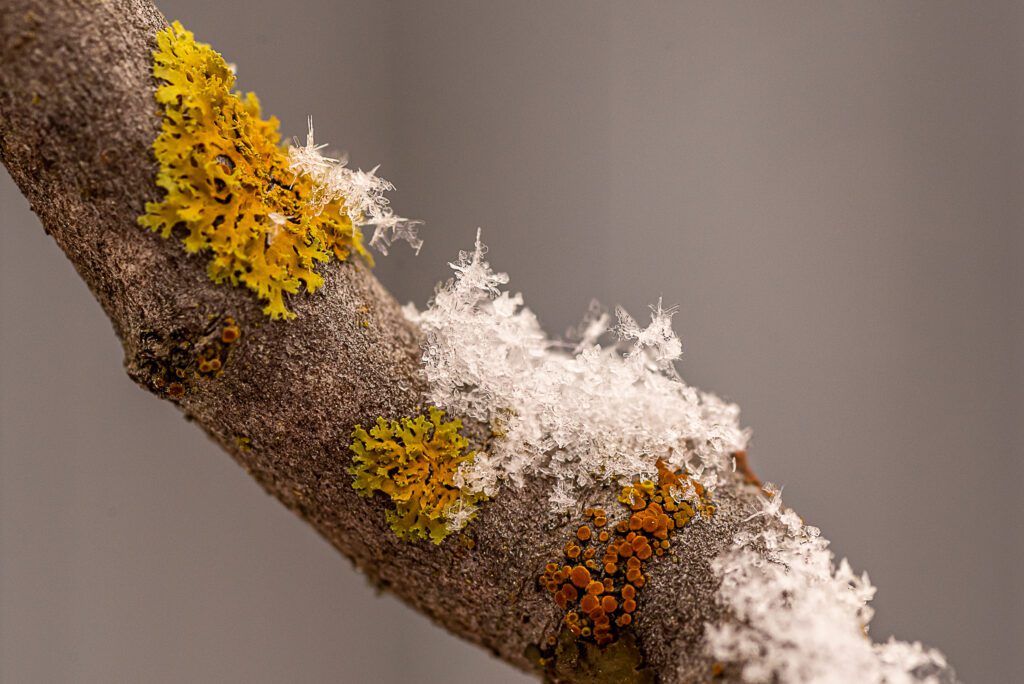
The possibility of an interesting snow image got me outside on the day I shot this image. I got some exercise, fresh air, and an interesting image of lichen and snowflakes on a tree branch. Wins all around! Photograph by Leanne Cleaveley
A rainy or cold day can offer different light and subjects that you will not see on a fair day. My interest in photographing water droplets gets me outdoors on wet days while my love of snowflakes forces me outdoors in the winter. I may capture an interesting image and I get the benefit of fresh air and exercise to boot. So don’t let the elements prevent you from heading out into nature.
No Photo? No Problem!
Raise your hand if you have ever returned from a photo walk with nothing great to show. That’s me, often, and it’s okay because the process is more important than the product. You got out, you practiced your photography (yes, practice helps you improve), and you are the beneficiary of all those great health benefits. So, don’t feel bad if you don’t have a photo to show for it!
Finally, I want to share a great piece of advice I received from a fellow photographer: “Don’t delete in-camera.” There are two excellent reasons to save reviewing your images until you get home. One is that you will enjoy your time outdoors looking around you at nature and not down at your LCD.
Finally, I want to share a great piece of advice I received from a fellow photographer: “Don’t delete in-camera.”
The other reason you should save reviewing your images until later is that viewing them on your computer screen may reveal a hidden treasure that you didn’t know you had or inform your practice. The process of going through images from an outing can be quite relaxing and some of your “duds” may hold some promise, or at the very least, an opportunity to learn and grow as a photographer.
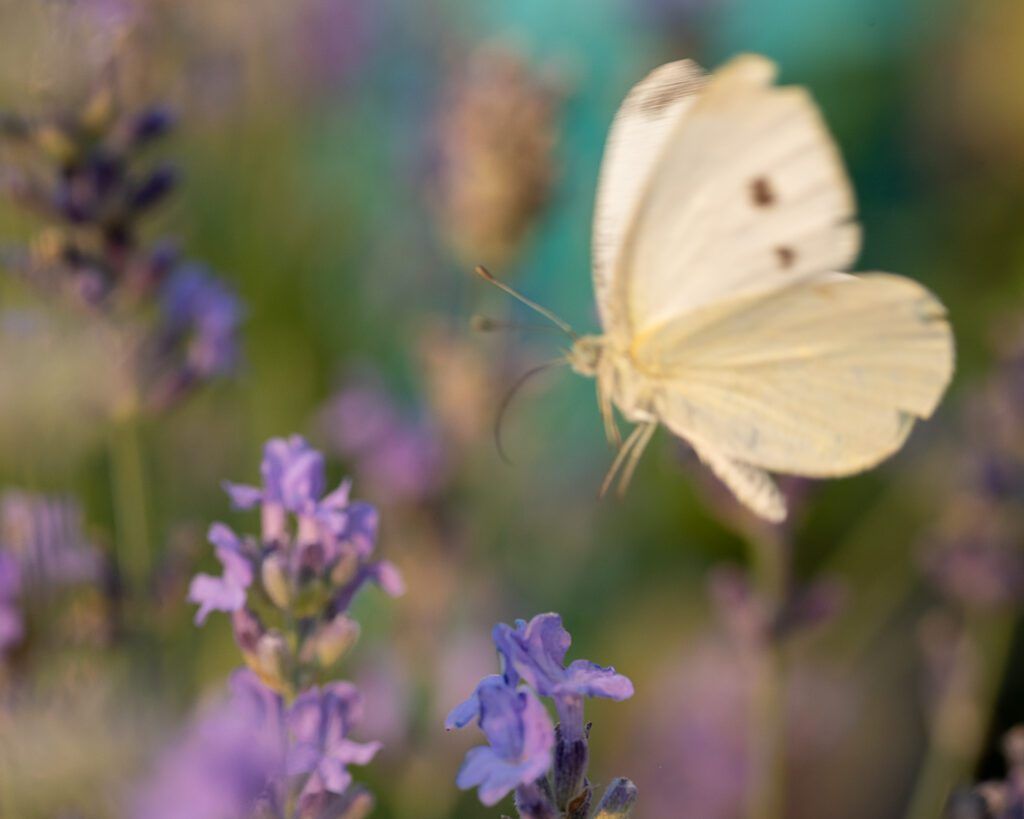
I certainly would have been happier had the butterfly in this image been in sharp focus. Not deleting the image in-camera, as might have been my first instinct, allowed me to appreciate the image later on my computer screen. I can also use this image to think about what I would have done differently and learn from my mistake. Photograph by Leanne Cleaveley
At the end of the day, the important thing is that you got out. I have many photos of walks that I call “practice,” and I am okay with it when I can tell myself I was reaping the benefits of getting out in nature. I got exercise, I cleared my mind, and I returned feeling grounded and less stressed about other things in my life.
If photography can do all that, then what are you waiting for? Grab that camera and head outside. Find that bit of nature and snap away.
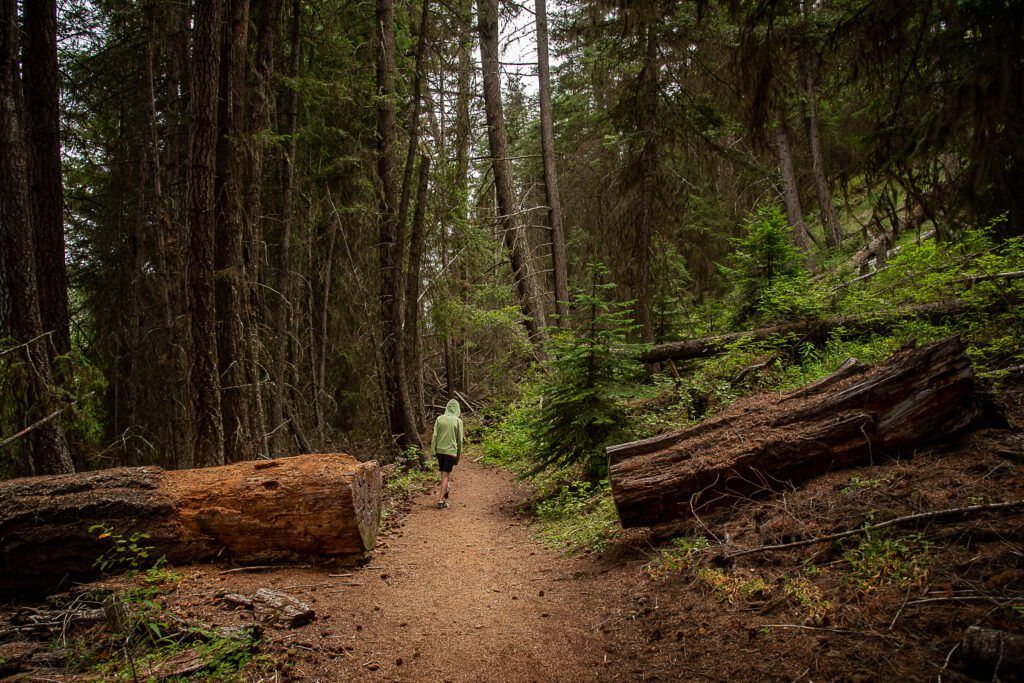
Photograph by Leanne Cleaveley
Recommended Reading: Want a step-by-step guide on photography skills with your DSLR? Grab a copy of our best-selling guide, the DSLR Crash Course.
Learning Assignment:
- Go on a photo walk in nature. Your destination can be a park, your backyard, or a mountain trail. Set aside at least an hour and just walk, observe, and shoot what you see. Try to shoot something up high, low to the ground, something big, something small, something still, and something that moves. Challenge yourself to notice details in your subjects and think about how you can best showcase those details in an image. This type of practice can help you gain skills as a photographer, but the very process of being out in nature observing can do a lot for your health as well.
- Taking less equipment can sometimes feel quite “freeing” for a photographer. Choose only one lens and go for a photo walk. As an added challenge, choose a lens that you are less inclined to use and do the same thing. For example, if you shoot with your telephoto all the time, take your wide-angle. This can be a fun way to break out of a photography rut as well.
- On the next rainy day, put on your raincoat, grab an umbrella, and head outside with your camera. Observe how the rain changes the subjects you see every day. Take pictures of water droplets, puddles, the sheen of water on leaves, or whatever takes your fancy. Do the same thing on a snowy or foggy day.


